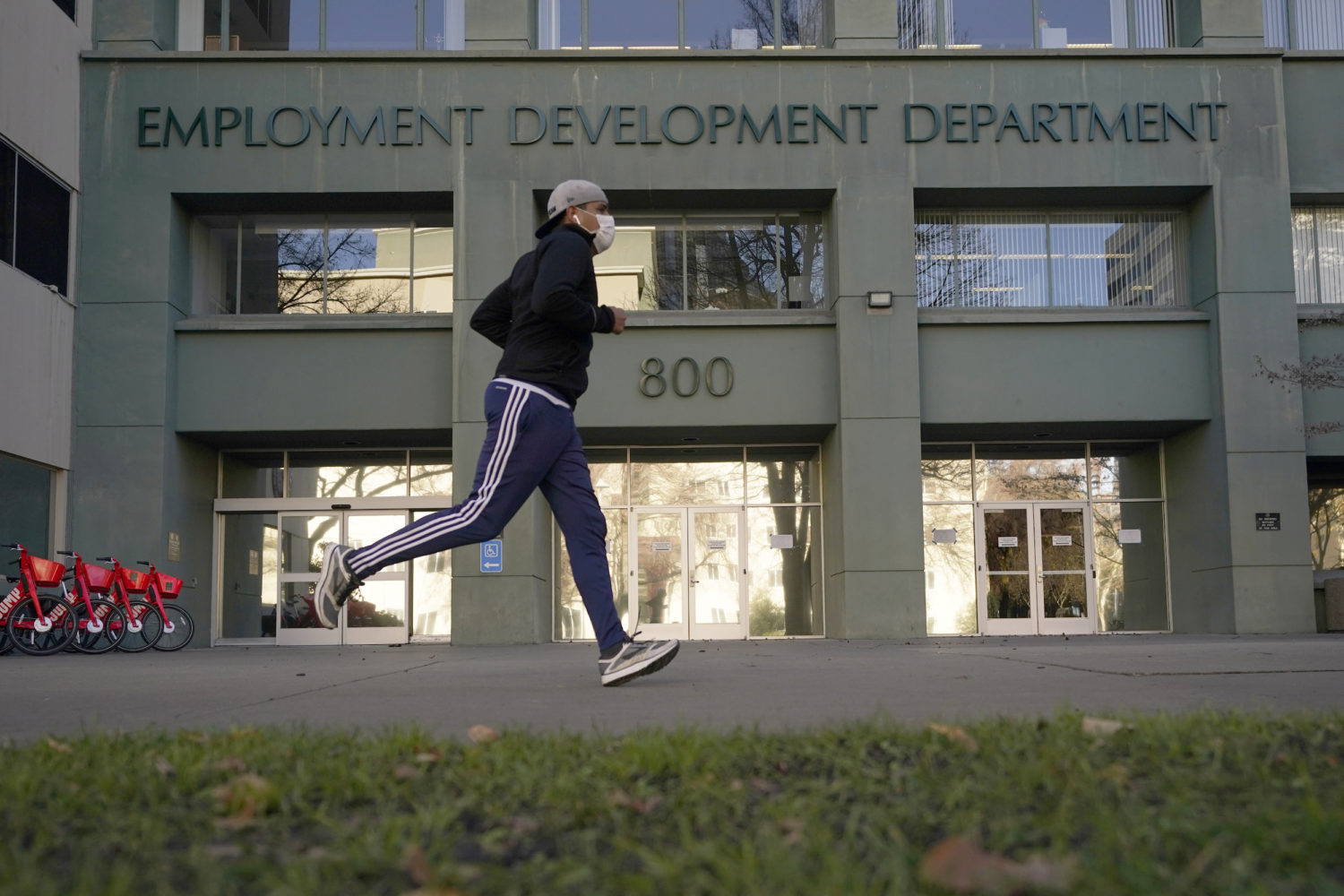 Covering COVID-19 is a daily Poynter briefing of story ideas about the coronavirus and other timely topics for journalists, written by senior faculty Al Tompkins. Sign up here to have it delivered to your inbox every weekday morning.
Covering COVID-19 is a daily Poynter briefing of story ideas about the coronavirus and other timely topics for journalists, written by senior faculty Al Tompkins. Sign up here to have it delivered to your inbox every weekday morning.
You heard this week about the federal charges against 47 people accused of stealing $250 million in COVID-19 funds that were supposed to feed needy children. What you may not know is that virtually every day lately, the Department of Justice has announced at least one case of fraud related to COVID-19 funds around the country.
Here is a collection of one month of announcements, accounting for millions upon millions of dollars in fraud:
Sept. 20:
Sept. 19:
- Boston Man Sentenced to More Than Seven Years in Prison for Pandemic Fraud, Identity Theft, Firearm and Drug Offenses
- Bryan man sent to prison for receiving PPP funds while under indictment
Sept. 16:
- Baltimore Man Sentenced to Over Four Years in Federal Prison for Submitting Over $660,000 in
- Fraudulent Cares Act Loan Applications, a Wire Fraud Conspiracy and Aggravated Identity Theft
- Former Washington State Employment Security Department worker sentenced to five years in prison for wire fraud, bribery, and aggravated identity theft
Sept. 14:
Sept. 13:
- Former Oregon Dentist Pleads Guilty to Stealing Nearly $11.5 Million in Covid-Relief Program Funds
- Glock Boyz Gang Member Sentenced to 60 Months in Prison for Aggravated Identity Theft and Firearms Offenses
Sept. 9:
Sept. 8:
- Illinois Man Sentenced to 55 Months in Prison
- Former Everett Man Pleads Guilty to Wire Fraud, Social Security Misuse and Identity Theft
Sept. 2:
Sept. 1:
- Shreveport Businesswoman Pleads Guilty in CARES Act Fraud Scheme
- Three Men Arrested in Unemployment Insurance Fraud Conspiracy
- St. Peters (Missouri) woman accused of $200,000 pandemic loan fraud
Aug. 31:
- Niagara Falls Man Pleads Guilty To COVID-19 Fraud
- Wilmington Woman Sentenced to 31 Months in Federal Prison in CARES Act Fraud Case
Aug. 29:
Once in a while, you will see a note on the Justice Department’s COVID-19 fraud website saying the government recovered some of the stolen money. Here is such an announcement from the Denver Secret Service office that says the “U.S. Secret Service returned approximately $286 million in fraudulently obtained Economic Injury Disaster Loans (EIDL) to the Small Business Administration (SBA). These recovered funds were generated by fraudulently submitted EIDL loan applications using fabricated or stolen employment and personal information.”
So far, the Justice Department says, “Since 2020, the Secret Service has seized over $1.4 billion in fraudulently obtained funds and assisted in returning approximately $2.3 billion to state unemployment insurance programs. The Secret Service has additionally initiated more than 3,850 pandemic related fraud investigations and investigative inquiries.”
Why October may be the best time to get a flu shot

In this Wednesday, Oct. 6, 2021, photograph, a shopper passes a sign urging people to get a flu shot outside a Hy-Vee grocery store in Sioux City, Iowa. (AP Photo/David Zalubowski)
It takes about two weeks for the annual flu shot to take full effect, and peak flu season in the U.S. is generally November to February. So to be sure you are as protected as possible before you mingle with friends and family during the holiday season, experts say sometime between now and early October is a great time to get your vaccine. Yahoo News reminds us:
Everyone 6 months or older should get the flu vaccine that’s appropriate for their age, says Conroy, unless your health care provider indicates otherwise.
There are several flu vaccines approved for use in those as young as 6 months old and older, while there are two vaccines approved only for adults 65 years and older, according to the CDC. The nasal influenza vaccine, FluMist, is available for children and adults ages 2 to 49. It’s also worth noting that some children 6 months to 8 years old need two doses of flu vaccine.
The annual flu shot is not a guarantee that you will not get the flu, but the Centers for Disease Control and Prevention says it dramatically lowers your chance of getting seriously ill. The CDC says:
While vaccine effectiveness (VE) can vary, recent studies show that flu vaccination reduces the risk of flu illness by between 40% and 60% among the overall population during seasons when most circulating flu viruses are well-matched to those used to make flu vaccines
A 2021 study showed that among adults hospitalized with flu, vaccinated patients had a 26% lower risk of intensive care unit (ICU) admission and a 31% lower risk of death from flu compared with those who were unvaccinated.
A 2018 study showed that among adults hospitalized with flu, vaccinated patients were 59% less likely to be admitted to the ICU than those who had not been vaccinated. Among adults in the ICU with flu, vaccinated patients on average spent four fewer days in the hospital than those who were not vaccinated.
A 2018 study showed that from 2012 to 2015, flu vaccination among adults reduced the risk of being admitted to an ICU with flu by 82%.
A 2017 study found that during 2009-2016, flu vaccines reduced the risk of flu-associated hospitalization among older adults by about 40% on average.
A 2014 study showed that flu vaccination reduced children’s risk of flu-related pediatric intensive care unit (PICU) admission by 74% during flu seasons from 2010-2012.
Flu vaccination has been associated with lower rates of some cardiac events among people with heart disease, especially among those who have had a cardiac event in the past year.
A 2018 study showed that getting a flu shot reduced a pregnant person’s risk of being hospitalized with flu by an average of 40% from 2010-2016.
A number of studies have shown that in addition to helping to protect pregnant people from flu, a flu vaccine given during pregnancy helps protect the baby from flu for several months after birth, when babies are too young to be vaccinated.
A 2022 study showed that flu vaccination reduced children’s risk of severe life-threatening influenza by 75%.
Despite all of that evidence, about half of Americans get an annual flu shot.
There is another reason to get a flu shot this year, even if you skipped it while you were stuck at home during the pandemic. The last couple of years have been fairly mild flu seasons in the U.S., so you probably do not have much built-up immunity to the flu virus. The San Diego Union-Tribune spoke with concerned doctors:
Given that immune system protections do reduce over time, Shane Crotty, a vaccine researcher with the La Jolla Institute for Immunology, said it stands to reason that many in the community will lack protection this year, which could very easily translate to big flu numbers and many home sick in bed.
“We don’t know what’s going to happen, but it’s a really good year to have more people get their flu shot than the average year,” Crotty said.
We will be able to track American flu cases on the CDC’s FluView website.
Every year, American epidemiologists look at the influenza trends in Australia, since their flu season is just ending. Their experience often foretells what is ahead for Americans. Australia just experienced its worst flu season in five years. The Australian flu season started earlier than usual and its infection rate was way above normal.
New airport satisfaction rankings

Travelers walk past an unfinished sculpture at the Tampa International Airport, Friday, March 25, 2022, in Tampa, Fla. The 21-foot-tall art piece by artist Matthew Mazzotta titled “Home” is a floor-to-ceiling resin and fiberglass sculpture of a flamingo dipping its head into water. (AP Photo/Chris O’Meara)
J.D. Power’s new survey measuring customer satisfaction with airports shows what I already claim: that the Tampa International Airport is the best large airport in America. Overall, fliers are less happy with airports in the U.S. Part of the problem is that concessionaires are jacking up food prices, and there is not enough parking. The survey found:
Inflation hits the airport: Nearly one-fourth (24%) of travelers say they did not make any food or beverage purchases at the airport because they were too expensive. That’s up from 20% in 2021 and 23% in 2019. Similarly, traveler satisfaction with the reasonableness of food and beverage pricing declines this year.
Nowhere to park: Some big declines in traveler satisfaction this year are found in the parking lot, where a shortage of space has caused satisfaction with surface parking lots to decline 45 points from 2021. Meanwhile, 14% of travelers say parking was more expensive than they expected, up from 12% in 2021 and 11% in 2019.
Mega airports:
Minneapolis-Saint Paul International Airport ranks highest in passenger satisfaction among mega airports with a score of 800.
San Francisco International Airport (796) ranks second
Detroit Metropolitan Wayne County Airport (791) and John F. Kennedy International Airport (791) each rank third in a tie.
Large airports:
Tampa International Airport ranks highest among large airports with a score of 846.
John Wayne Airport, Orange County (826) ranks second.
Dallas Love Field (825) ranks third.
Medium airports:
Indianapolis International Airport ranks highest among medium airports with a score of 842. Pittsburgh International Airport (839) ranks second.
Jacksonville International Airport (826) and Southwest Florida International Airport (826) each rank third in a tie.
Among the lowest ranked airports: Newark Liberty International Airport, O’Hare International Airport, Philadelphia International Airport and Hollywood Burbank Airport.
Hundreds of uncounted deaths in America’s prisons and jails
The U.S. Senate Permanent Subcommittee on Investigations says it has uncovered “revealed shocking long-term gaps in federal oversight, including hundreds of uncounted deaths in 2021 alone.” Committee Chair Jon Ossoff said this week the committee’s investigation “uncovered nearly 1,000 deaths in custody in 2021 that went uncounted by the Department of Justice.”
He added, “The crisis in America’s prisons, jails, and detention centers is ongoing and unconscionable. The Department of Justice and the Congress must treat this as the emergency for Constitutional rights that it is.”
The committee is frustrated that the Department of Justice published so called “custodial death” data for decades and then stopped. Congress twice (2000 and 2014) passed legislation requiring the Justice Department to comply with the Death in Custody Act and, still, the reports are incomplete, the senators said. And the DOJ shows no sign that it is about to restart reporting state and local data.
- In the first quarter of FY 20, the Department of Justice did not capture any state prison deaths in 11 states or any jail deaths in 12 states and the District of Columbia.
- In FY 21 alone, according to GAO analysis produced at our request, the Department failed identify nearly 1,000 deaths, and my assessment is the true number is likely much higher. Of those records that were collected, 70% were incomplete, and 40% of records failed to capture the circumstances of death.
Federal judges in both Arizona and Illinois recently held those state prison systems in contempt for failing to address gruesome medical neglect within their walls. The Justice Department has in recent years found unconstitutional conditions in prisons in Florida and Alabama, and it is investigating similar allegations in Mississippi and Georgia. In New York City, the infamous Rikers Island jail complex is under threat of being put in receivership by a federal judge because of a string of preventable deaths and chronic corruption.
A WBUR investigation last year found 37 in-custody deaths that local sheriffs never reported to the Justice Department, and an analysis published earlier this year in The Appeal found that most states were not in compliance with the DCRA.
We’ll be back tomorrow with a new edition of Covering COVID-19. Are you subscribed? Sign up here to get it delivered right to your inbox.







